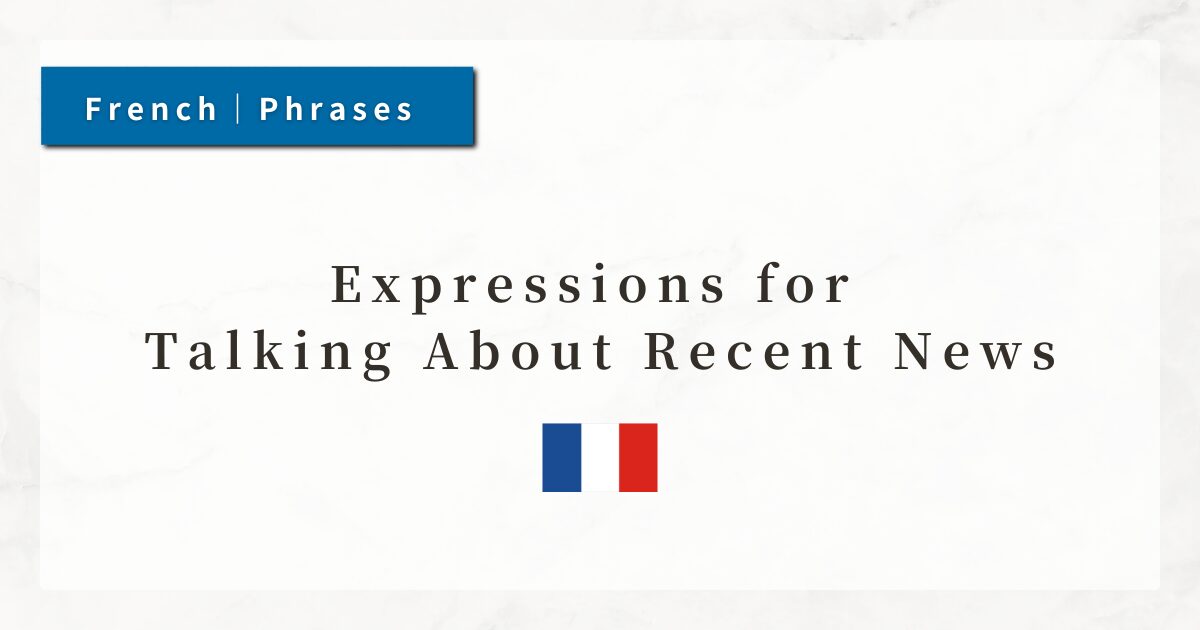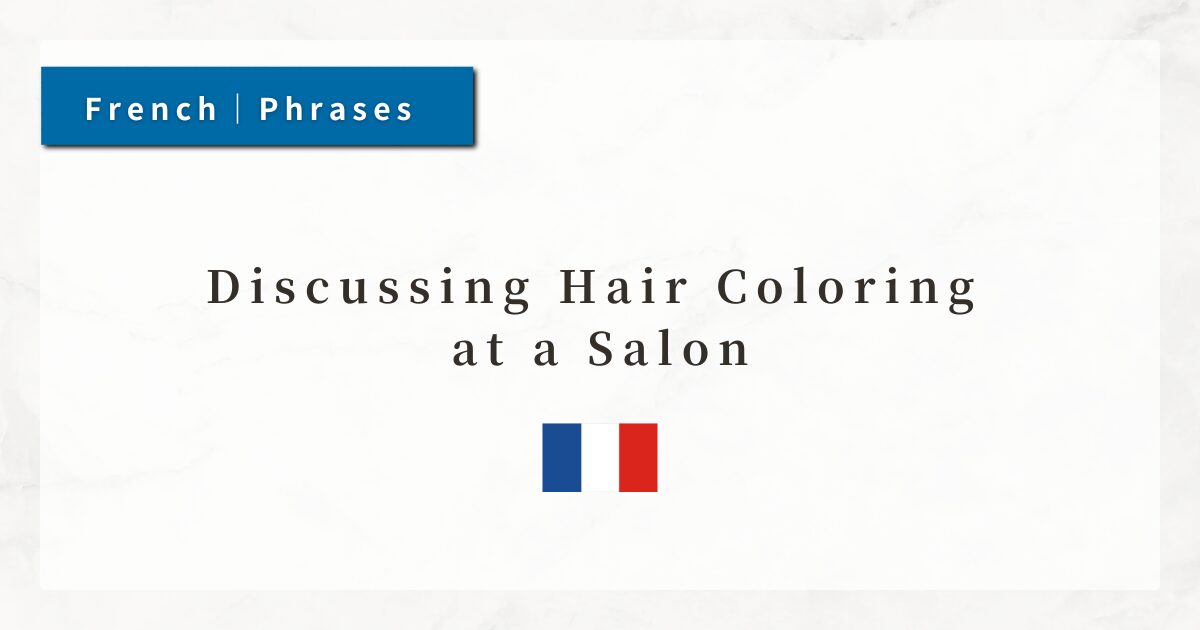#11 Expressions for Talking About Recent News|French Conversation Patterns

In casual conversations with friends or colleagues, it is natural to say something like, “Did you hear the news recently?”
In French as well, bringing up the news or current events adds depth to conversations and provides useful practice for expressing your interests and opinions.
In this lesson, we will focus on everyday expressions such as “Did you see the news?” or “What people are talking about these days is …”
Dialogue

Tu as entendu les dernières nouvelles ?
(Have you heard the latest news?)

Non, pas encore. Qu’est-ce qui s’est passé ?
(No, not yet. What happened?)

Il y a eu un gros incendie dans le sud de la France.
(There was a big fire in the south of France.)

Ah bon ? C’est grave ?
(Really? Is it serious?)

Oui, plusieurs maisons ont été détruites. Heureusement, personne n’a été blessé.
(Yes, several houses were destroyed. Fortunately, no one was injured.)

C’est terrible… Il faut faire attention en été.
(That’s terrible… We need to be careful in summer.)
1. The Question “Tu as entendu les dernières nouvelles ?”
This is a very common way to open a conversation. It is similar to saying, “Did you see the news?” or “Did you hear about that?” in English.
- Tu as entendu les dernières nouvelles ?
(Have you heard the latest news?)
“Tu as entendu” is the passé composé of entendre (to hear):
subject tu + auxiliary as (from avoir) + past participle entendu.
“les dernières nouvelles” literally means “the latest news.” Note that nouvelles is always used in the plural here.
2. Asking About Events: “Qu’est-ce qui s’est passé ?”
This phrase means “What happened?” and is a standard way to ask about events.
- Qu’est-ce qui s’est passé ?
(What happened?)
“Qu’est-ce qui …” introduces a question with an indefinite subject (“what”).
The verb “se passer” (to happen) is used in the passé composé:
reflexive pronoun se + auxiliary être (est) + past participle passé.
3. Describing Past Events: “Il y a eu …”
“Il y a eu” is a very useful structure to state that something “there was/there were” happened in the past.
It comes from “Il y a” (there is/there are), put into the passé composé.
- Il → impersonal subject
- y a eu → auxiliary avoir in passé composé (a eu) with the pronoun y.
Example:
- Il y a eu un accident.
(There was an accident.)
4. Passive Voice: “… ont été détruites”
This structure means “we’re destroyed” and is in the passive voice.
The French passive is formed with “être + past participle,” which must agree with the subject in gender and number.
- Plusieurs maisons ont été détruites.
(Several houses were destroyed.)
“ont été” is the passé composé of être. détruites is the past participle of détruire (to destroy), marked as feminine plural to agree with maisons.
5. Negative Construction: “Personne n’a été blessé”
The structure “personne … ne + verb” means “no one …”.
Example:
- Personne n’a été blessé.
(No one was injured.)
Here, blessé is the past participle of blesser (to injure). Combined with “n’a été blessé,” it means “no one was injured.”
Summary
- Tu as entendu les dernières nouvelles ?
→ A common way to ask “Did you hear the latest news?” - Qu’est-ce qui s’est passé ?
→ A standard phrase to ask “What happened?” - Il y a eu …
→ A useful way to describe past events (“there was/there were …”). - ont été détruites
→ Passive form, often found in news reports (“were destroyed”). - Personne n’a été blessé.
→ Negative expression: “No one was injured.”




